

The business case for sustainability is a strong one.
Embedding climate impact into the core of your company creates values and competitive advantage for many reasons – from winning new climate-concerned customers to improved retention rates to mitigating against climate risks.
Making sustainability initiatives a business priority should be a no brainer.
But, we know that despite this sustainability teams often struggle to get buy-in on sustainability from senior leaders and decision makers. In fact, McKinsey research found only a quarter of CEO’s have sustainability as one of their top three priorities.
So, in this article, we’ll be covering two things:
- What is the business case for sustainability?
- How do you get buy-in to make sustainability a priority? Making the business case for sustainability in your company.
Plus, we’ve also put together a free slide deck template which brings the information in this post into a format that you can use for pitching the business case for sustainability to decision makers in your company.
![Free download: the business case for sustainability at [insert company name]](/_next/image?url=https%3A%2F%2Fimages.prismic.io%2Fluneco%2F1185bd28-e4fa-4e6e-bb6d-c6c346950d15_business%2Bcase%2Bfor%2Bsustainability%2Bdownload-min.png%3Fauto%3Dcompress%2Cformat&w=3840&q=75)
What is the business case for sustainability?
The main argument in the business case for sustainability is that consumers are now actively seeking out sustainable options when they make a purchase. If you offer a genuinely climate-friendly option, you have competitive advantage in this growing market and will increase profitability.
Then, alongside this opportunity to gain market share, there’s also: increasing customer loyalty and retention, increasing employee retention, making cost savings, managing future risk, and creating an innovation mindset.
The growth in companies engaging with schemes like B Corp, Science Based Targets, Tech Zero, Carbon Neutral Club, and more, is testament to the fact that sustainability does create value for a business – and that businesses absolutely can generate economic value by addressing social and environmental problems.
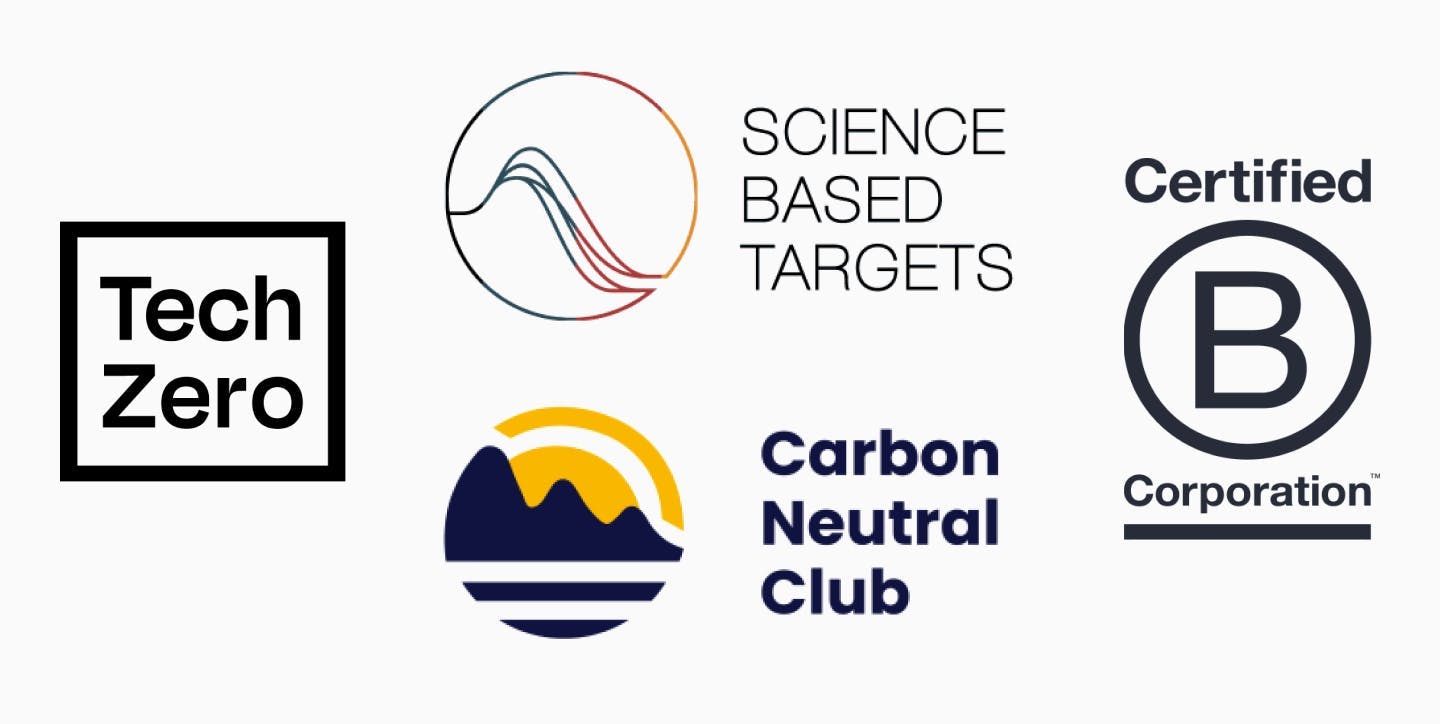
So, let’s take a closer look at the arguments within the business case for sustainability, diving deeper into those key arguments:
- Gain competitive advantage
- Increase customer loyalty and retention
- Improve employee retention
- Make immediate cost savings
- Create an innovation mindset
- Manage future climate risk
1. Gain competitive advantage
Climate-conscious consumers are actively searching for greener, climate-friendly alternatives when they make purchasing decisions – and this is a growing portion of the market as a whole.
And yet, amidst much greenwashing, it’s still difficult to find genuinely sustainable brands, who have put climate impact at the core of their mission.
If you can offer a genuinely sustainable option, you can win big in this new and growing market. And if you don’t, your competitors soon will.
Here’s some of the research:
- 72% of the UK public believe that businesses should have legal responsibility to people and the planet, alongside maximising profit (B Lab UK and Regenerate survey, May 2020)
- 61% of retailers are seeing increased demand for sustainable products, and these sustainable products are seeing 5.6x faster growth (HBR).
- 80% of consumers say that sustainability is a priority and 70% will pay a premium price to shop with a sustainable brand (IBM, June 2020)
- 62% of young consumers refer to buy products that are green and sustainable (Shopify)
- 71% of millennials and 67% of Gen Zers say that addressing climate change is a top priority for their generation (Pew Research Center, May 2021)
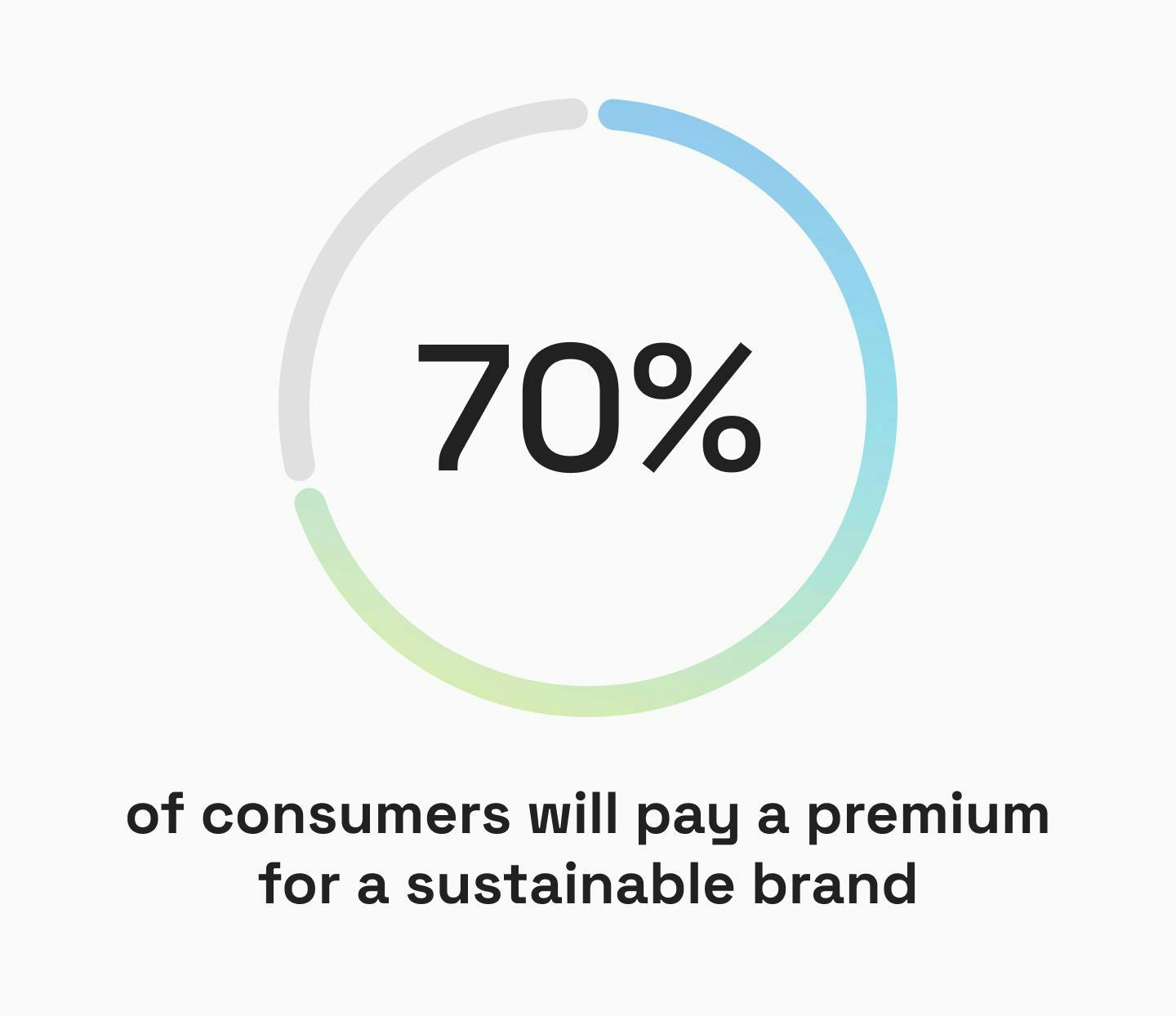
There’s also growing evidence that sustainable businesses have better financial performance – creating a direct correlation between sustainability and profitability. Which is also why investors are prioritising ESG and sustainability in the companies they engage with.
Climate impact = business growth.
- Arabesque and University of Oxford analysed existing reports on sustainability and financial performance, and found that 80% demonstrated a positive correlation between stock price performance and good sustainability practices (2016).
- The Enacting Purpose Initiative has predicted that over the next 15 years we’ll see companies with a greater sense of purpose earning 9% higher total shareholder return, with 10% higher growth.
- Over the past 12 years since the implementation of their Sustainable Living Plan, brands under the Unilever umbrella which have purpose and sustainability deeply embedded in them have been growing at 175% faster than those which don’t.
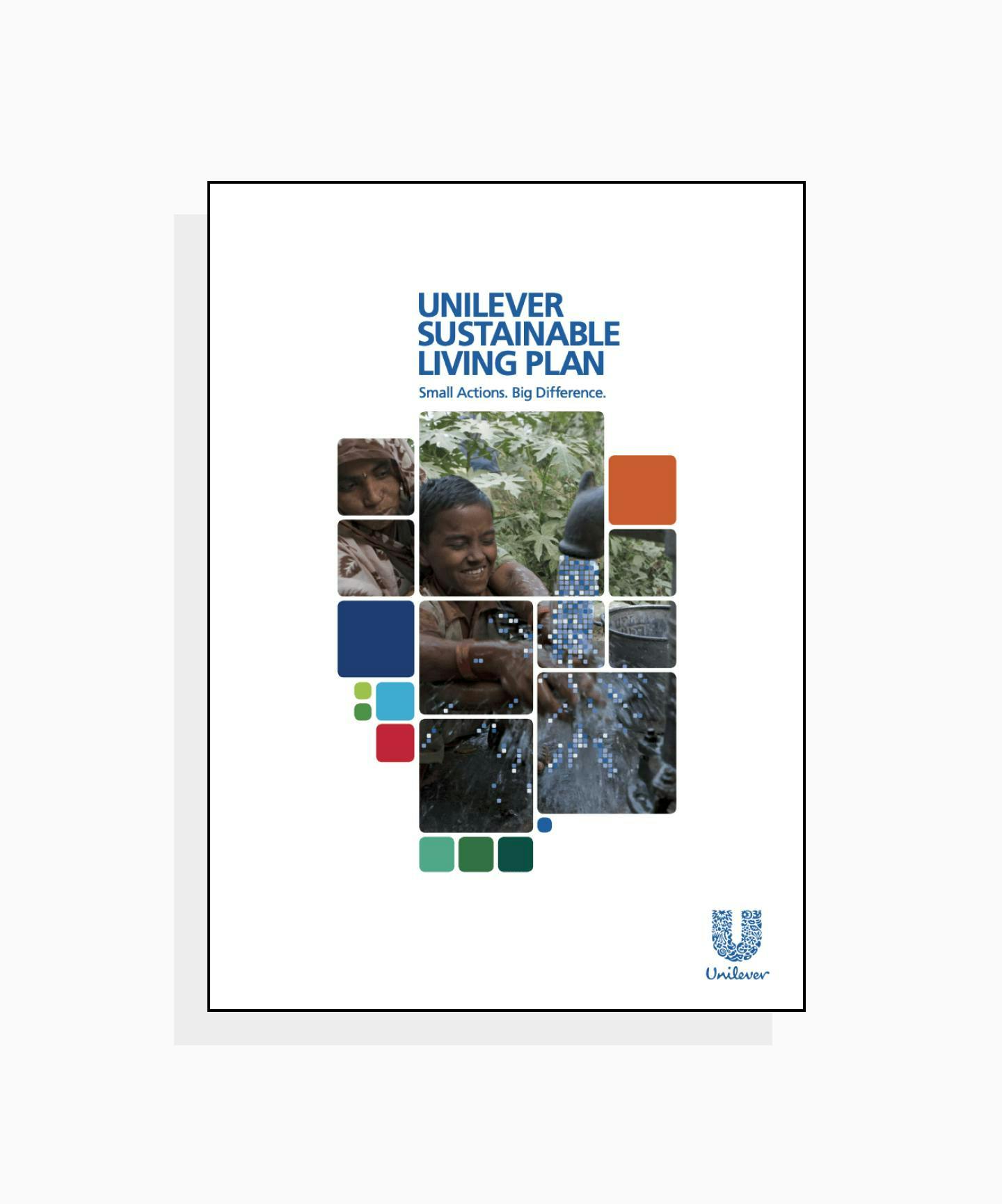
2. Increase customer loyalty and retention
As well as gaining new customers, sustainability is a major driver for customer loyalty – turning those new customers into returning customers. Not only does this boost customer retention rates, but we all know how vital loyal customers are as a referral channel, sharing a brand with their peers.
Here’s some of the research on business sustainability and customer loyalty:
- 79% of UK adults would be more likely to trust a company that is working to address environmental issues (Amex Trendex report, April 22)
- 77% of consumers would stay loyal to a brand that automatically offset the carbon emissions of their purchase (Lune, September 2021)
- 21% of consumers have encouraged others to switch to a company whose values align with theirs on an issue (Deloitte, 2021)
- Nearly 80% of executives pointed to an increase in customer loyalty as a key benefit from sustainability initiatives (Capgemini Research Initiative, 2020).
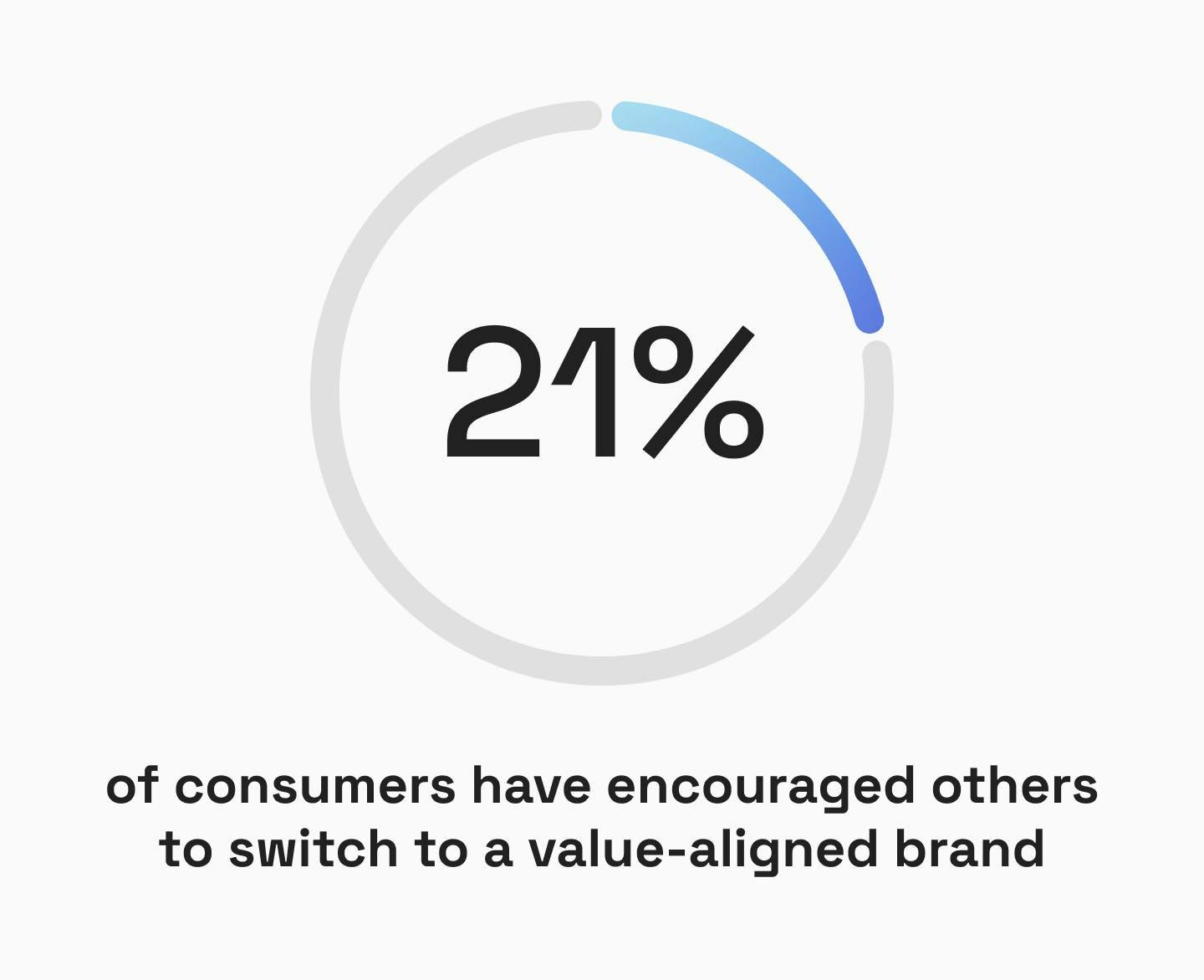
So why does climate action drive customer loyalty?
Partly, it’s down to the fact that it’s still very difficult to find genuinely sustainable options, so when consumers do come across one they’re likely to champion it.
But value alignment also plays a big part. Humans are social creatures, constantly looking for a sense of belonging and identification with the people we surround ourselves with, particularly through our shared viewpoints and worldviews – which, today, includes how we view the climate crisis.
And we connect with companies in the same way – the brands that we feel value aligned with help us feel like we’re part of a community, a social group, that we’re going to keep coming back to. A 2020 study terms this as ‘customer-company identification’, and found a positive correlation between this identification and the customer’s loyalty to the company.
For a more detailed discussion on customer loyalty, go to our blog: The psychological reason that business climate action leads to customer loyalty
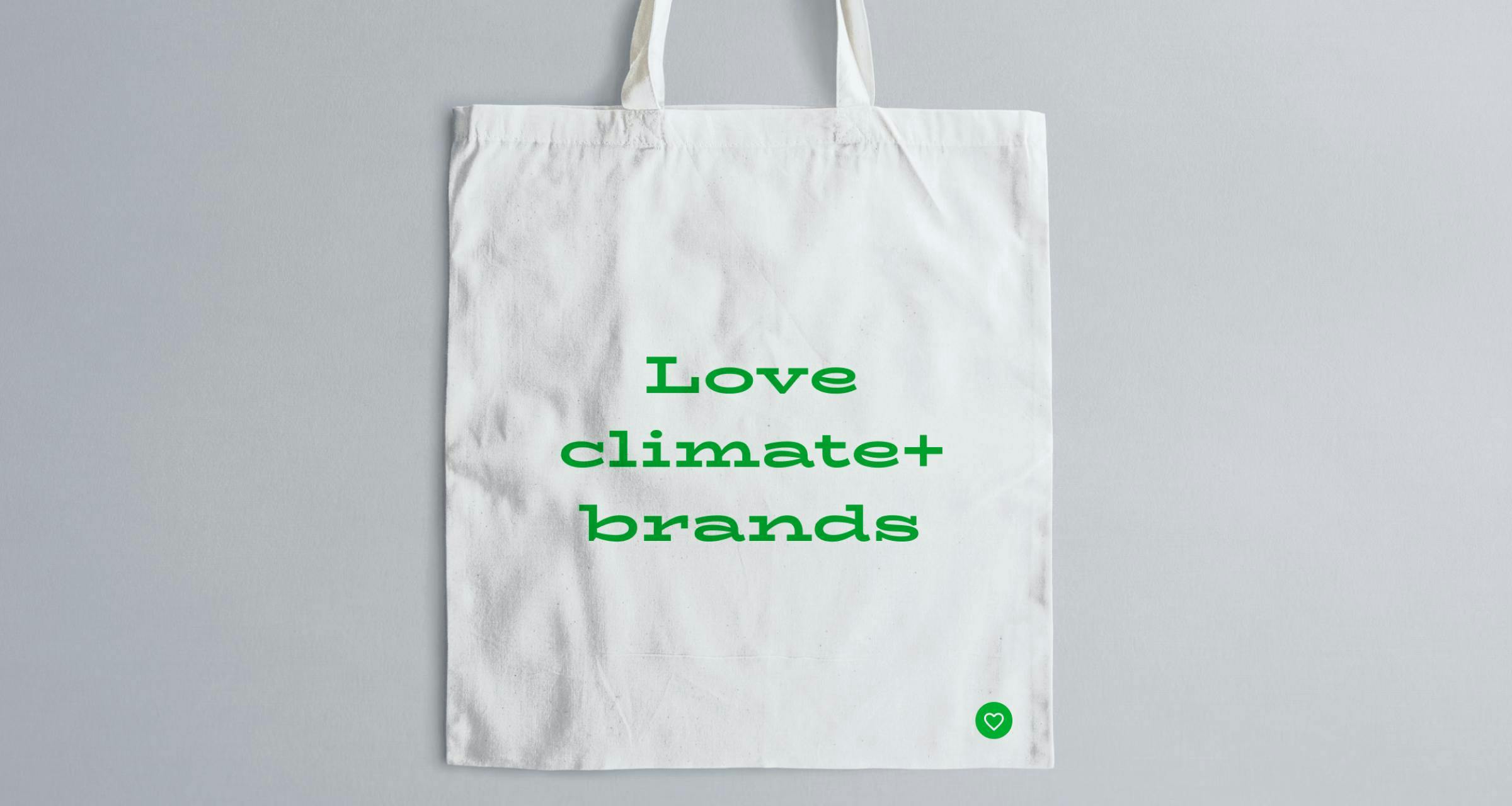
3. Improve employee retention
It isn’t just customers that are looking for brands that align with their values. It’s your employees (and potential future employees) too.
Happy, motivated employees are integral to a successful business. They enhance productivity across the company. They talk positively about the brand to those they meet, enhancing reputation and even acting as a referral scheme to win you new customers. They’re also more likely to stay in their job for longer, meaning that knowledge and experience remains within the business – reducing time lost in handovers and training up new employees. Not only that, but retaining employees saves money too, with a reduced need to pay for recruiters and job advertising sites.
- 2 million new jobs will be created in the UK’s green economy between now and 2030 (Ten Point Plan for a Green Industrial Revolution)
- A third of UK employees say they are willing to quit their jobs if their employer takes no action to reduce or eliminate its carbon footprint (Supercritical)
- 63% of employees want their employer to provide more opportunities for purpose in work — and that positive employee experience makes staff members 8 times more likely to stick with a role (McKinsey)
- 81% want to help their employers improve their environmental sustainability (Yale School of Management)
- 40% of millennials have chosen a job because of company sustainability, compared to just 17% of baby boomers. And 75% of millennials even say that they would choose to take a decrease in salary to take a role in an environmentally responsible company (Swytch)
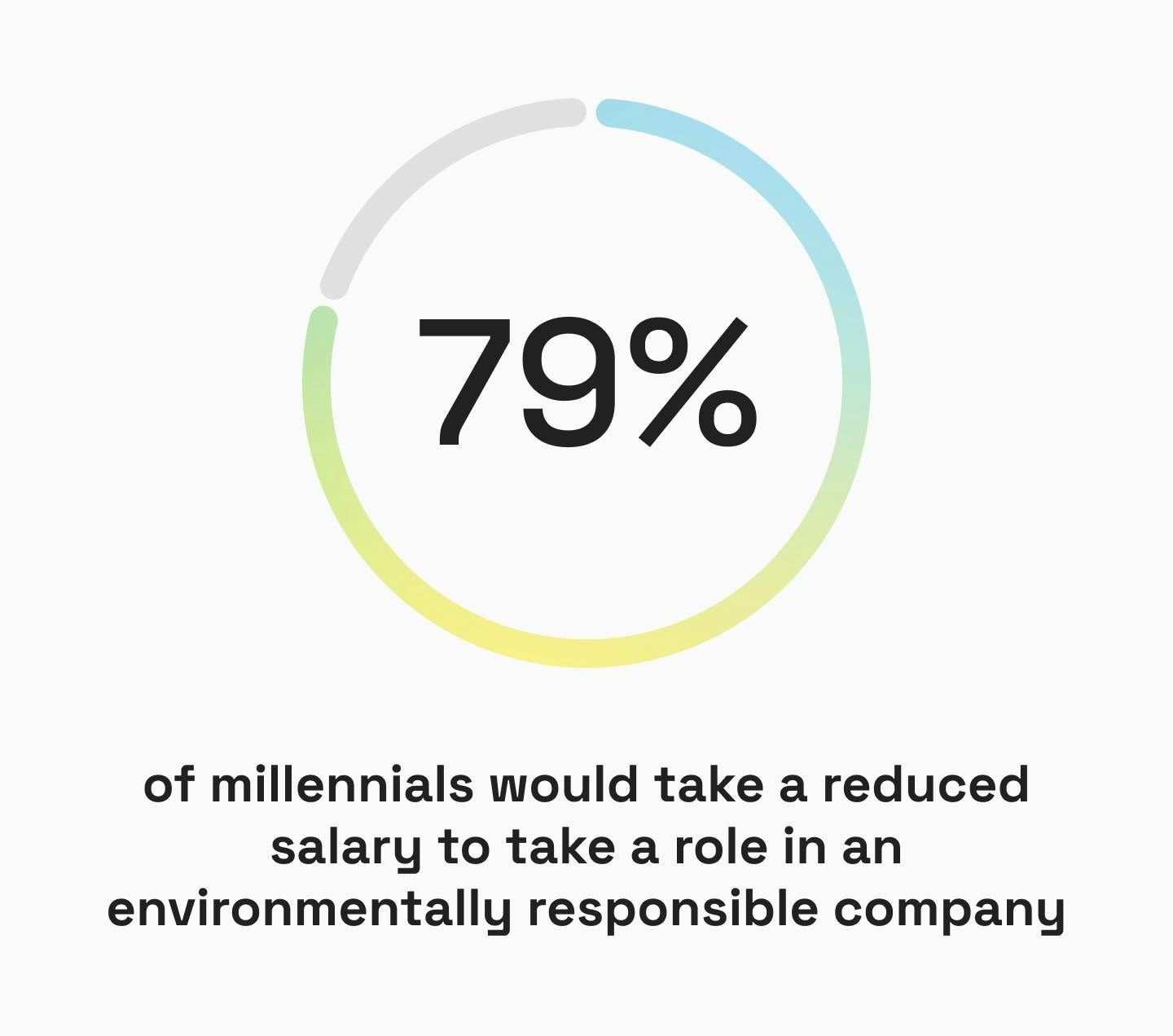
So prioritising sustainability is an important way to find and retain the best employees for your business – avoiding them leaving in the search for purposeful work, as we’ve seen in the ‘great resignation’ of 2021 and the ‘climate quitting’ of 2023.
4. Make immediate cost savings
Becoming an environmentally conscious business includes addressing your own carbon footprint as an organisation. At the core of this lies efficiency, which means that there are cost savings to be made by making environmental improvements.
Energy use is the best example.
Energy bills are a significant cost for businesses with physical space – office buildings, warehouses, manufacturing or production plants, retail shops, cafes etc
Often energy bills are substantially higher than they need to be, because energy is being wasted through inefficiencies in the building such as draughty, single-glazed windows, an old boiler, uninsulated walls, or poorly fitting loading bay doors.
Making changes to improve energy efficiency will stop excess energy being wasted, cutting costs whilst also reducing carbon emissions.
Other key areas where cost savings can be made by addressing company carbon emissions include:
- Transportation: reducing business travel by booking virtual meetings or cutting down on overseas conferences, swapping to electric vehicles for good transportation and delivery, reviewing transport routes to see if journey planning could be improved, incentivising employees to travel to site by bike, public transport, or car sharing.
- Waste: reducing waste of raw materials used in product manufacturing, ensure recycling programmes are in place.
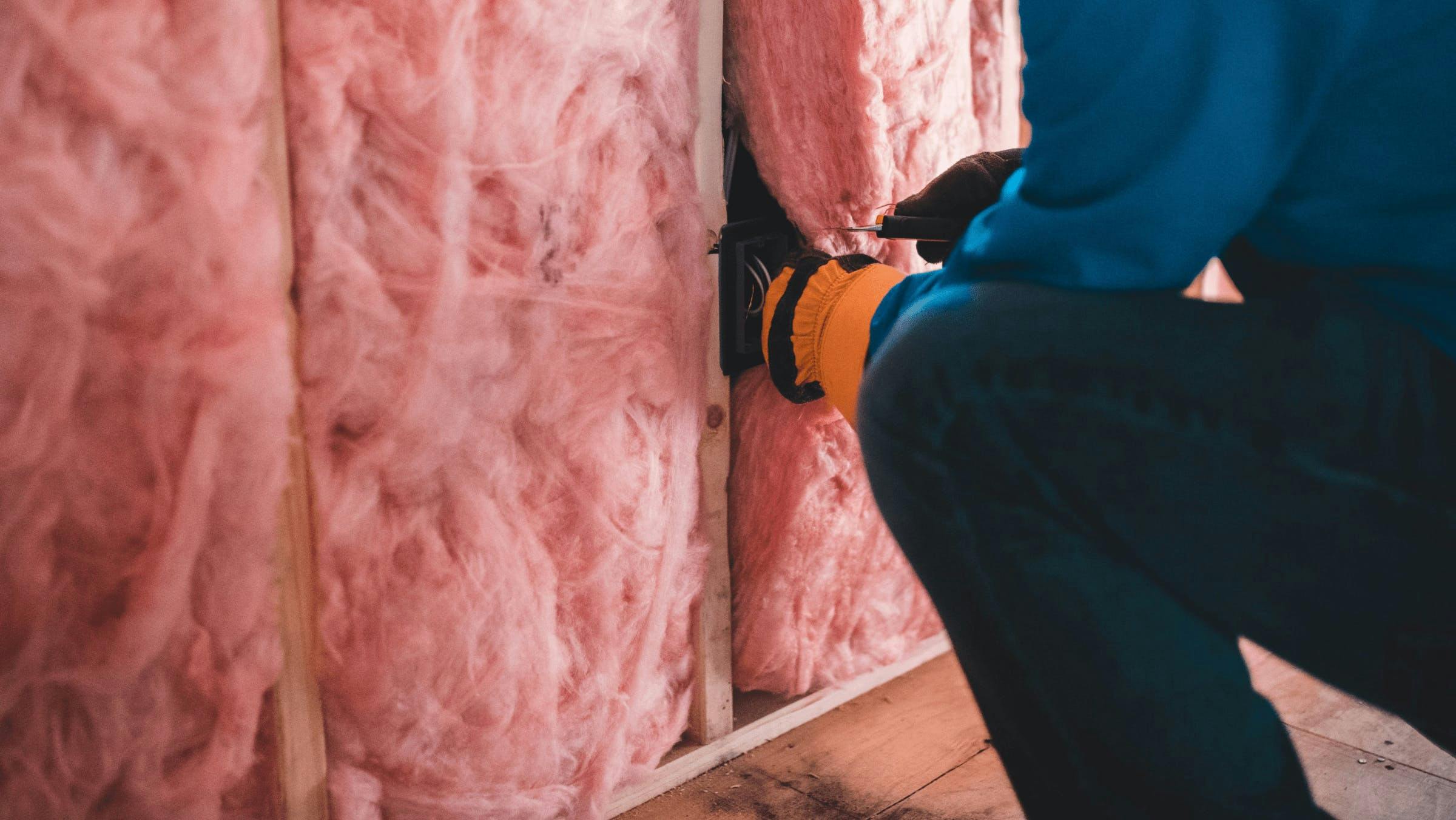 Installing wall insulation
Installing wall insulation5. Create an innovation mindset
Bringing sustainability into the core of a business, drives innovation.
Finding ways to reduce your own environmental impact as a company might mean redesigning products or processes – or even inventing new ones entirely.
Exploring ways that your company could contribute to climate solutions might mean introducing a new branch to the business.
And incorporating climate impact into existing customer experiences (or creating new ones) opens your brand up to new markets.
All of which differentiates you from competitors and represent opportunities for accelerated business growth. Plus, having a culture of innovation means a company is adaptable, ready to overcome any challenge that heads your way.
This is what happened for Proctor & Gamble.
When they conducted a life cycle assessment of their products, they found that US households were spending an average of 3% of their annual electricity spend on heating up water to wash their clothes with. In response to this, brands in the Proctor & Gamble label – Ariel and Tide – launched a line of ‘cold water’ laundry products that don’t require hot water to work well, enabling customers to wash their clothes at a lower temperature, cutting their energy consumption down. When brainstorming business sustainability, this probably wasn’t something that they’d even put on the table, but the process of becoming a more sustainable brand opened up an opportunity for a new product line.

6. Manage future climate risk
So far, we’ve focused on commercial opportunities through business sustainability.
It’s also important to note the other side of the coin – the risks associated with not making sustainability a business priority.
Being environmentally conscious may currently be optional for businesses, but that won’t be the case for long.
Regulation which makes it mandatory for large companies to report on their environmental impact and their plans to make improvements is coming to the EU, UK, and USA.
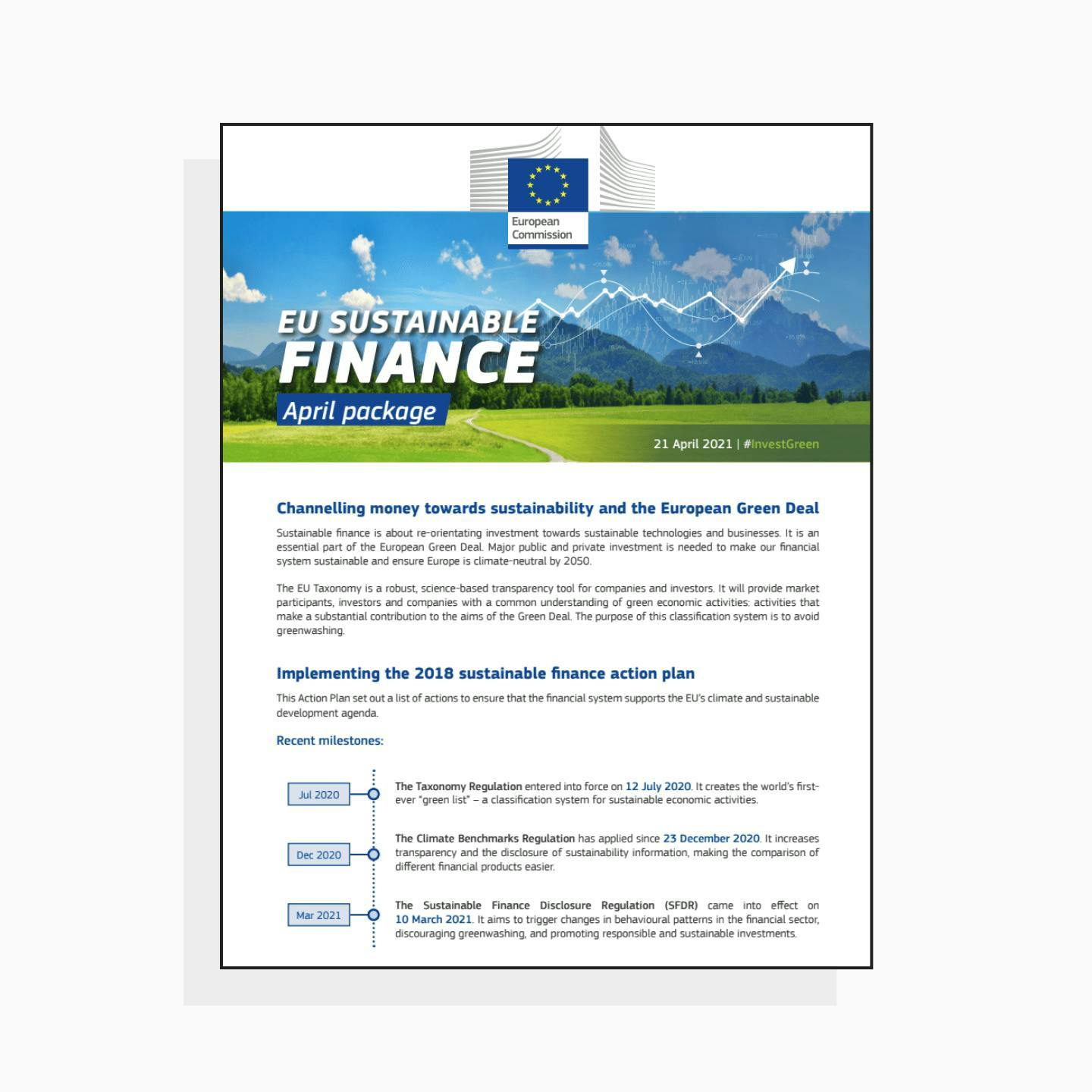
We expect that to quickly expand to all kinds of businesses, and for more and more countries across the world to follow suit. Soon, failing to act on climate will pose massive regulatory risk for a business.
That’s not to mention the reputational risk of doing nothing on climate when consumers are demanding action from businesses. Or the direct climate risks to business, such as the disruption and delays to the supply chain already being caused by increasing extreme weather events.
Business risk mitigation has to include climate risks – it already should. Climate change poses real risk to businesses, in several different ways. It’s in your best interest as an organisation to do something about it, and help to mitigate that future risk.
Read more about climate risks in our blog: 3 reasons that the biggest business risk we face is now climate change

How do you get buy-in to make sustainability a priority? Making the business case for sustainability in your company
Knowing that there is a strong business case for sustainability is one thing, but getting buy-in on that from senior leaders and decision makers is another.
We work with sustainability teams all the time, and their number 1 complaint is that they struggle to get their management teams to buy-in on sustainability, and make climate initiatives a business priority.
Our biggest piece of advice is to sell sustainability as a commercial proposition – using all the information in this article about the business case to align sustainability with the vision and commercial goals for the business as a whole.
Think of it like pitching any new project or initiative to a business, Dragon’s Den style.
Here’s how we’d suggest you go about it:
- Find your fellow sustainability champions: working with others lightens your burden and brings new skills and connections to the table, whilst also increasing pressure on decision makers to take notice. Seek out those in your company who are keen to be involved in sustainability initiatives, and particularly prioritise anyone in a senior position with decision making powers. For example, you could start a ‘green team’ slack channel.
- Do your research – get into the company’s mindset. To sell sustainability as a priority, you first need to understand the goals, targets, and KPIs that decision makers are working towards – including their current blockers for meeting those goals, what decision-making processes look like for new projects, and who the key stakeholders are. If you can show them that sustainability will help them towards those targets, they’re way more likely to jump onboard. Read your company’s business plan back to front, rewatch CEO staff briefings, ask your seniors a tonne of questions.
- Build your business case. Then, use the information you’ve gathered to build a killer business case for sustainability that’s bespoke to your company’s goals. Make it effective by: demonstrating the market opportunity and the competitive landscape, providing evidence and examples to support your argument (research studies, case studies of successful businesses differentiating through sustainability, opinions from customers and employees on sustainability etc), and creating a positive vision for the future rather than criticising the company for the lack of current work on environmental impact.
- Set up a conversation. Once you have your killer business case, it’s now the time to set a time with the decision makers, and pitch your heart out. Good luck!
And don’t forget, for a helping hand you can download a free slide deck template for pitching the business case for sustainability at your company.
![Free download: the business case for sustainability at [insert company name]](/_next/image?url=https%3A%2F%2Fimages.prismic.io%2Fluneco%2F1185bd28-e4fa-4e6e-bb6d-c6c346950d15_business%2Bcase%2Bfor%2Bsustainability%2Bdownload-min.png%3Fauto%3Dcompress%2Cformat&w=3840&q=75)
Readers also liked
Readers also liked

Subscribe for emissions intelligence insights
Get the latest updates in the world of carbon tracking, accounting, reporting, and offsetting direct to your inbox.


